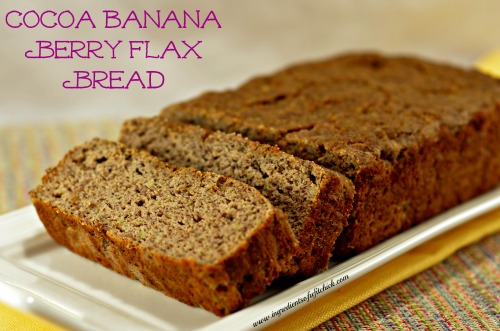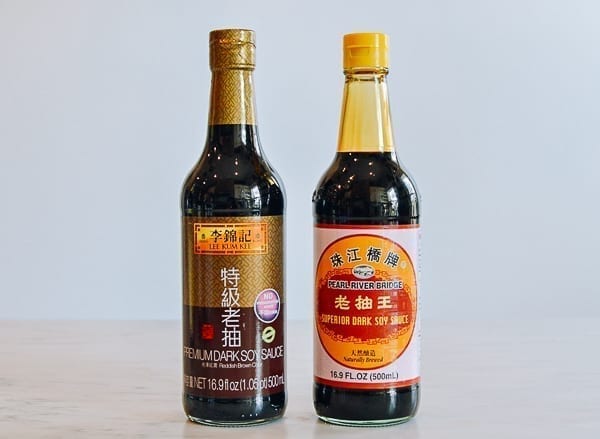If you’ve ever found yourself standing in front of the butcher’s case, puzzled by the array of meats available and wondering which cut is similar to a flank steak, then this article is for you. The world of meat cuts can be a confusing place, and understanding the similarities and differences between them is key to becoming a confident and creative home cook.Flank steak, known for its intense beef flavor, is a versatile cut that’s equally at home on the grill or inside a piping hot oven. It comes from the cow’s abdominal muscles and has a distinctly rich, savory taste. However, there are other cuts that share similar characteristics with flank steak.
From the fibrous skirt steak to the marbled and sumptuous flat iron, there are several other cuts that are similar to flank in more ways than one. If you’re looking to broaden your culinary horizons, discovering these cuts can help you recreate your favorite beef dishes using different yet equally tasty components.
Unlocking the Secret of Flank Steak: An Overview
The flank steak, sometimes referred to as ‘London Broil,’ is a diverse and flavorful cut of meat primarily prized for its flavor and tenderness. It may not be as tender as filet mignon or as juicy as a ribeye, but its strong beef flavor, lean texture, and comparatively lower cost make it a favorite among many steak lovers.
The Anatomy of a Flank Steak
Flank steak comes from the abdominal muscles or lower chest of the cow, a well-exercised part of the cow’s anatomy, resulting in a leaner cut with a good amount of connective tissue. The popularity of this cut has grown due to its flavor which, while lean, is incredibly rich and full-bodied.
| Characteristic | Description |
|---|---|
| Location | Lower Chest or Abdominal Muscles |
| Texture | Lean and somewhat tough |
| Flavor | Rich, beefy, and full-bodied |
| Cooking method | Best when marinated and grilled or broiled |
| Price | Relatively Affordable |
Cooking Tips for Flank Steak
Given its lean nature, flank steak is best when marinated or rubbed with spices to tenderize and flavor the meat. Ideally, it should be cooked quickly using high heat, such as grilling or broiling, and then sliced thin against the grain for serving. This is why flank steak is often used in dishes like stir-fries or fajitas. Remember, the goal is to preserve the rich flavor whilst taking steps to tenderize it and highlight its unique characteristics.
Grasping the Basics: Understanding Meat Cuts
When it comes to cooking meat, knowing your cuts can transform your culinary prowess. A simple change in the meat cut could be the difference between a tender steak and a tougher one. In the world of meat, flank steak has gained considerable popularity due to its distinct flavor and tenderness. However, there are cuts similar to it worth exploring. Before diving into that, let’s grasp the basics of understanding meat cuts.
The Anatomy of Meat Cuts
Meat cuts, simply put, are how a butcher breaks down an animal into pieces fit for cooking. The characteristics and qualities of these pieces we get depend on their location in the body of the animal. Here are four main categories:
- Primal cuts: These are large chunks of meat initially separated from the carcass of an animal. Examples include loin, rib, and brisket.
- Sub-primal cuts: These are smaller sections cut from the primal cuts, suitable to sell wholesale. An example is a tenderloin taken from a whole loin.
- Portion cuts: These are ready-to-cook pieces that we commonly see in retail stores. These are derived from sub-primal cuts. Examples include steaks, roasts, and chops.
- Processed cuts: These cuts undergo further processing, such as smoking, curing, or grounding. Examples include sausages and ham.
Factors Influencing Meat Cuts
Various factors influence the taste, texture, and ideal cooking method of a meat cut. To name a few:
- Location on the animal: Parts that do more work, like the flank, tend to be tougher but flavorful. Those less worked tend to be tender, like the loin.
- The amount of connective tissue: More connective tissue leads to a tougher cut, but with the right cooking method, it can also mean more flavoured meat. The shank, consists a plentiful amount of connective tissue.
- The amount of fat: More fat adds more flavor and makes the meat tender. Parts like the ribeye are well marbled with fat, giving it a rich taste.
Understanding these basics of meat cuts leads the way to pinpointing the right cut of meat for your cooking needs. As a result, not only can you enjoy flank steak, but also discover other similar cuts that might suit your recipe better.
The Uniqueness of Flank Steak: Characteristics and Usage
Flank steak is a cut of beef that is becoming more desirable due to its unique characteristics and versatility in cooking. Here is what makes this cut stand apart:
- Juicy and flavorful: Despite being one of the leaner beef cuts, flank steak is very juicy and flavorful, making it a favorite among steak enthusiasts.
- Distinctive grain: Flank steak has a noticeable grain that runs across the entire cut, contributing to its unique texture when cooked.
- Value for money: Compared to more premium cuts like ribeye and sirloin, flank steak offers great taste and texture for a more affordable price.
- Quick to cook: Due to its thinness, flank steak cooks quickly, making it an ideal cut for fast-paced meals.
Flank steak’s unique nature allows it to be used in an array of dishes. Here are few ways on how to utilize this versatile cut:
- Grilling: Flank steak is perfect for grilling given its thinness. It can be cooked to perfection in mere minutes on a hot grill.
- Braising: Since it is a tough cut, slow-cooking methods like braising enhance its flavor and make it tender.
- Slicing: Flank steak is often used in fajitas, stir-fries and salads. For best results, cut it against the grain to keep it tender.
- Marinating: Flank steak absorbs marinades very well. Marinating it for few hours or overnight can deliver a flavorful and juicy steak.
Whether you’re hosting a dinner party or simply looking for a delicious and quick weeknight meal, flank steak is a cut worth trying. Its unique characteristics paired with its flexibility in cooking make it a beloved cut of meat among cooks and food enthusiasts alike.
Flank Steak Alternatives: Top Contenders
Flank steak is a popular cut of beef, known for its flavor, versatility, and relatively low cost. However, there are several other cuts of meat that can make a good alternative if flank steak is not available or if you simply want to try something different. Here are the top contenders that you should consider:
- Skirt Steak: This is probably the most similar to flank steak in terms of flavor and texture. It’s also a lean and flavorful cut, making it a great option for dishes that require marinating.
- Hanger Steak: Although not as well-known as flank or skirt steak, the hanger steak is a fantastic alternative. It has a slightly more pronounced flavor and is perfect for grilling.
- Flat Iron Steak: Cut from the shoulder area, the flat iron steak is tender, juicy, and well-marbled. It’s a great choice for grilling, broiling, or pan-searing.
- London Broil: Technically, London Broil refers to a cooking method rather than a specific cut of meat. However, it is actually often used to describe a top round steak that’s been marinated and broiled. The result is a steak that’s very similar to flank in taste and texture.
- Brisket: While brisket requires a longer cooking time, when cooked properly, it offers a rich and deep flavor that’s different, but just as satisfying as flank steak.
In the end, choosing the right flank steak alternative really depends on your personal preference and the particular recipe that you are following. It’s worth trying out these different cuts of meat to find your favorite!
Skirt Steak: A Delight in the Kitchen
If you are someone who loves to experiment with different cuts of meat, you shouldn’t miss out on trying skirt steak. It’s a delightful piece of meat that comes from the lower part of a cow/cattle. In terms of similarity, skirt steak is considered quite close to flank steak. Both are lean cuts of beef and have a delicious, strong flavor.
Texture and Flavor
The skirt steak is known for its unique texture and intense beefy flavor. It has longer muscle fibers, which gives it a slightly coarse, yet appealing texture. It is lean and does not contain a large amount of intramuscular fat, hence, it might seem a bit tough if not cooked properly. Nevertheless, when prepared right, the outcome is a delight with a deep, rich, beefy flavor that stands out in any dish.
How to Cook Skirt Steak
Since skirt steak tends to be a bit tough, it’s important to cook it properly to retain its delightful flavor and texture. Start by marinating it, this not only enhances the flavor but also tenderizes the meat properly. Grilling or pan-searing over high heat are two of the most recommended methods for cooking skirt steak. Remember to cut across the grain when serving, this will ensure that the steak is tender to the bite.
In the culinary world, the popularity of skirt steak is constantly on the rise. Used widely in dishes like stir-fries or fajitas, the flavorsome skirt steak can turn a regular meal into a gourmet delight. So next time you plan to cook, consider skirt steak for a flavorful twist to your meal.
Exploring the Hanger Steak: Similarities and Differences
A hanger steak, which is named for the way it ‘hangs’ from the diaphragm of the cow, is a cut that’s similar in some ways to flank steak, whereas it contrasts in other aspects.
Similarities with Flank Steak
The similarity between hanger steak and flank steak lies fundamentally in their toughness. Like flank steaks, hanger steaks are also lean and fibrous, meaning they’re ideal for marinating and need to be cooked quickly over high heat to maintain tenderness. Either of them can be sliced against the grain after cooking to optimize palatability. Taste-wise, both of them have a rich, beefy flavor that holds up well to strong sauces and spices.
Differences from Flank Steak
Even though they resemble each other in some ways, hanger and flank steak also have their unique characteristics. Hanger steak is a part of the diaphragm that hangs between the last rib and the loin. It’s sometimes called “butcher’s steak” because butchers would often keep this particularly tasty piece for themselves.
Flank steak, on the other hand, is located below the loin and has a more pronounced grain than hanger steak. It’s thicker and wider than hanger steak, translating into a longer cooking time. Flank steak is more versatile in terms of cooking methods; it’s a great option for grilling, broiling, braising, and sautéing. Hanger steak, however, is particularly suited to grilling or broiling and best served medium-rare to retain its juiciness.
As for availability and pricing, hanger steak is harder to find and often more expensive than flank steak, due in part to the fact there’s only one hanger steak per animal.
Shining the Spotlight on Flat Iron Steak
Known originally from the shoulder of the cow, Flat Iron Steak is renowned for its abundant flavor. Its name is derived from its distinctive shape that resembles an old-fashioned metal flat iron.
The Distinctiveness of Flat Iron Steak
Flat Iron Steak, also referred to as butler’s steak in the UK, or oyster blade steak in Australia, is actually a cut from the shoulder of a beef animal. The cut is sometimes erroneously called a “top blade” steak, which is a completely different cut. Flat Iron Steaks are richly marbled, proving excellent flavor and tenderness when cooked properly.
The interesting thing about this steak cut is its versatility. Like the flank steak, the flat iron steak can be cooked using several varying methods. Whether you prefer broiling, grilling, skillet-cooking, or roasting, this well-marbled cut of beef will deliver an incredibly rich and robust flavor.
How to Cook Flat Iron Steak
Though Flat Iron Steak can be cooked in a variety of ways, grilling remains one of the most popular methods. The high-heat method chars the surface of the meat, giving an alluring sear, while keeping the inside juicy and tender. Marinating before grilling is often recommended to enhance the flavor.
Flat Iron Steak pairs beautifully with hearty sides like mashed potatoes or grilled vegetables, and a glass of bold red wine serves to accentuate the pleasure. Whether you are a seasoned chef or a home cook, bringing out the best in this unique cut of meat can be an enjoyable endeavor leading to a remarkable culinary delight.
Leveraging Steak Cuts: Useful Tips for Your Next BBQ
If you’re planning a BBQ and looking to get the best out of your meat, understanding which steak cuts to use and how to prepare them can elevate your grilling game. Here are some tips on how to make the most of different types of cuts, similar to flank steak.
Choosing the Right Cuts
While flank steak is a great choice for BBQ due to its rich flavor and tender texture when cooked right, there are also other cuts similar to it which are well-suited for grilling. Some of them are skirt steak, flat iron steak, and hanger steak.
| Steak Cut | Characteristics |
|---|---|
| Skirt Steak | Long, flat cut that is flavorful but may be tough if not cooked and sliced properly. |
| Flat Iron Steak | Comes from the shoulder and known for its tenderness. Holds up well to grilling. |
| Hanger Steak | A flavorful cut from the diaphragm. Should be marinated before grilling to ensure tenderness. |
Preparing Your Steak
Regardless of the cut you choose, it is often beneficial to marinate your steak prior to grilling. This not only adds extra flavor, but certain marinades can also help to tenderize the meat. Be careful with the cooking time since over-cooking can turn these cuts tough. Slice against the grain after grilling for maximum tenderness.
Understanding your meat cuts can go a long way in determining the success of your BBQ. Hopefully, with these tips, leveraging steak cuts for your next BBQ will be a breeze. Bon appétit!
FAQ: What is similar to flank steak
I have a recipe that calls for flank steak, but it’s not available. What’s the best substitute?
The best substitute for flank steak is skirt steak due to its similar texture and flavor. Like flank, skirt steak is a lean and flavorful cut of beef, ideal for dishes like fajitas. It absorbs marinades well and is best cooked quickly over high heat to avoid becoming too tough. Remember to cut against the grain for maximum tenderness.
I want to cook a dish that usually requires flank steak, but I want a more tender cut. Any suggestions?
If you’re looking for a tender cut, the top sirloin steak is a good alternative to flank steak. While flank steak is a lean, flavorful cut of beef, top sirloin is generally more tender than flank steak and equally versatile. It works well in various recipes, ensuring a juicy and flavorful result without being overly tough.
I’m planning to make a flank steak recipe but can’t find flank steak in my local store. What can I use instead?
If you can’t find flank steak, the flap steak is a thin, lean cut of meat that makes a great substitute. It comes from a bottom sirloin, and, similar to that of flank, it offers a rich beef flavor. It’s excellent for grilling or broiling and works well in flank steak recipes, especially when marinated to enhance its tenderness.
My recipe calls for flank steak, but I want to try something different. Is there another steak that compares well?
Yes, the bavette steak is an excellent substitute for flank steak. Also known as the “flap meat,” this cut of beef comes from the same region as flank and is prized for its flavor. It’s a bit more tender and contains beautiful marbling, which adds to its taste. It’s perfect for grilling or searing in dishes like fajitas.
I’m preparing a dish that requires a lean cut, but flank steak isn’t available. What’s a reliable replacement?
Tri-tip steak is a good replacement for flank steak when you’re looking for a lean cut of meat. It’s less tough, with a comparable flavor profile, and is also best cooked on high heat, just like flank steak. It’s an excellent choice for recipes that call for flank steak, particularly if you prefer a slightly more robust and tender beef cut.
Since flank steak is a lean and flavorful cut of beef, what would be a great substitute in a jiffy?
A great substitute for flank steak in a jiffy is the jiffy steak, known for its thin cut and ability to cook quickly. While it’s a bit tougher compared to flank steak, its similar thickness and flavor profile make it suitable for quick-cooking methods like broiling or pan-searing, ideal for recipes that originally feature flank steak.
For someone who loves red meat, especially in dishes like fajitas, what’s an excellent substitute for flank steak?
Skirt steak is an excellent substitute for flank steak in dishes like fajitas. It comes from the flank area and, while it’s a tougher cut of meat, it carries a deep, beefy flavor similar to that of flank steak. It absorbs spices and marinades well, making it a favorite in many recipes that originally use flank steak.
I’m interested in exploring different cuts of steak. What’s an alternative that works well as a substitute in various recipes?
The bottom sirloin, or bavette steak, works well as a substitute in various recipes that call for flank steak. It has a robust flavor and a texture that’s tender yet lean, similar to flank steak. It’s versatile for grilling, broiling, or pan-searing, and it adapts well to recipes that require high-heat cooking.
Since flank steak is best cooked over high heat, what’s another steak that fits this cooking style while substituting well in flavor and texture?
The skirt steak fits this description perfectly. Skirt steak is an excellent choice for high-heat cooking methods because, like flank steak, it’s a flavorful cut that benefits from quick cooking times to retain its juiciness and flavor. It’s an excellent substitute for flank steak in various recipes due to its similar texture and taste.
I’m having difficulty finding a cut of beef that comes close to the leanness and flavor of flank steak. Any recommendations?
You might want to try top sirloin steak as an alternative. While it’s slightly more tender, it’s also a lean cut, offering a balance of flavorful meat without too much fat. Its versatility in cooking methods makes it a suitable stand-in for flank steak in various recipes, capturing the essence of the dish while providing a slightly different mouthfeel.




